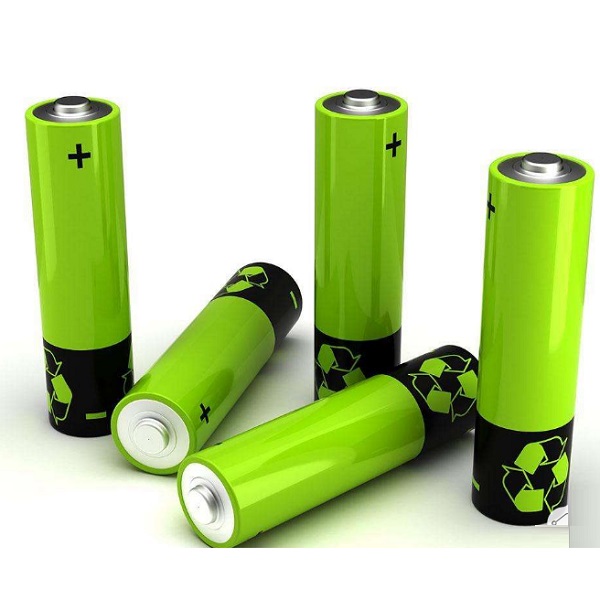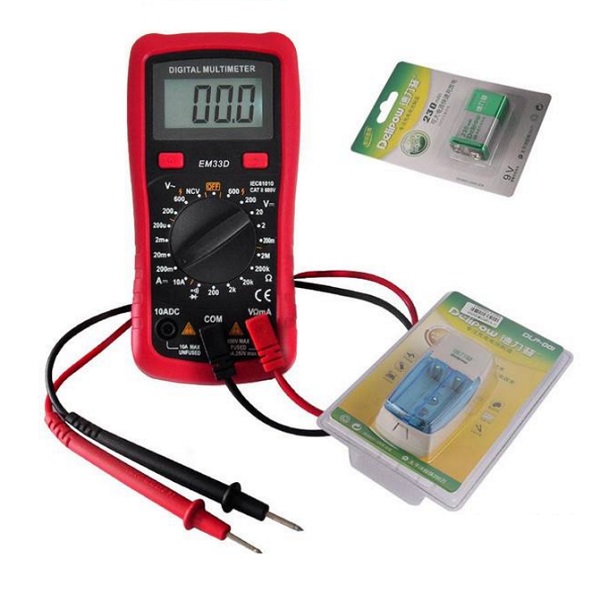Rechargeable Battery

1. Charging rate (C-rate)
C is the first letter of Capacity, used to indicate the magnitude of the current when the battery is charged and discharged.
For example, when the rated capacity of the rechargeable battery is 1100mAh, it means that the discharge time of 1100mAh (1C) can last for 1 hour. For example, the discharge time of 200mA (0.2C) can last for 5.5 hours.
2. Cut-off discharge voltage
When the battery is discharged, the voltage drops to the lowest working voltage value at which the battery should not be discharged.
According to different battery types and different discharge conditions, the requirements for battery capacity and life are also different, so the specified battery discharge termination voltage is also different.
3. Open circuit voltage (OCV)
When the battery is not discharged, the potential difference between the two poles of the battery is called the open circuit voltage.
The open circuit voltage of a battery will vary depending on the materials of the battery's positive and negative electrodes and the electrolyte. If the materials of the battery's positive and negative electrodes are exactly the same, then the open circuit voltage is the same regardless of the size of the battery and how the geometry changes.
4. Depth of discharge (DOD)
In the process of using the battery, the capacity released by the battery as a percentage of its rated capacity is called the depth of discharge.
The depth of discharge has a deep relationship with the charge life of the secondary battery. When the depth of discharge of the secondary battery is deeper, the charge life is shorter, so it should be prevented as far as possible during use.
5. Over discharge
If the battery exceeds the end voltage value of the battery discharge during the discharge process, it may cause the internal pressure of the battery to increase when the battery continues to discharge, and the reversibility of the positive and negative active materials is damaged, causing the battery capacity to decrease significantly.
6. Over charge
When the battery is being charged, if it continues to be charged after it reaches a full state, it may cause the internal pressure of the battery to increase, the battery to deform, or leak overnight, and the performance of the battery will also be significantly reduced and damaged.
7. Energy density
The electrical energy released by the average unit volume or mass of a battery.
Generally, under the same volume, the energy density of lithium-ion batteries is 2.5 times that of nickel-cadmium batteries and 1.8 times that of nickel-metal hydride batteries. Therefore, under the same battery capacity, lithium-ion batteries will Smaller size and lighter weight.
8. Self discharge
Regardless of whether the battery is used or not, due to various reasons, it will cause the phenomenon of its power loss.
If calculated on a monthly basis, the self-discharge of lithium-ion batteries is about 1% -2%, and the self-discharge of nickel-hydrogen batteries is about 3% -5%.
9. Cycle life
Under the repeated charge and discharge of the rechargeable battery, the battery capacity gradually decreased to 60% -80% of the initial capacity.
10. Memory effect
In the process of battery charging and discharging, many small bubbles will appear on the battery plate. Over time, these bubbles will reduce the area of the battery plate and also indirectly affect the battery capacity.
Use a multimeter to judge the quality of the rechargeable battery
The following uses a lithium ion battery with a standard voltage of 4.2V as an example

If the voltage is 4.2V after full charge, it is ok. If the battery time is more than 0.7 times of the new battery, it means the battery is not bad. If the volume voltage is higher than 4.2V after full charge, it means that the charger has problems. (Note The voltmeter must be accurate). Please see the introduction below.
1. The nominal voltage of the lithium-ion battery is 3.7V (3.6V), and the charging cut-off voltage is 4.2V (4.1V, and there are different designs according to the battery brand) (The specification of the lithium ion battery is: lithium ion secondary battery)
2. Lithium ion battery charging requirements: first, constant current charging, that is, a certain current, and the battery voltage gradually increases with the charging process, when the battery terminal voltage reaches 4.2V (4.1V), change the constant current charging to constant voltage charging That is, the voltage is constant, and the current decreases gradually as the charging process continues according to the degree of saturation of the cell. When it decreases to 0.01C, the charging is considered to be terminated. (C is a method of expressing the battery's nominal capacity against the current. For example, if the battery has a capacity of 1000mAh, 1C is the charging current of 1000mA. Note that it is mA instead of mAh. 0.01C is 10mA.) Of course, the specification is 0.01 C5A, I simplified it here.
3. Why 0.01C is the end of charging: This is stipulated by the national standard GB / T18287-2000 and is also discussed. Before, everyone generally ended with 20mA, that is, no matter how large the battery capacity is, the stop current is 20mA. The 0.01C specified in the national standard helps the charging to be fuller, which is beneficial for the manufacturer to pass the identification. In addition, the national standard stipulates that the charging time does not exceed 8 hours, that is to say, even if it has not reached 0.01C, 8 hours have arrived, it is considered that the charging is completed. (Batteries with no problem in quality should reach 0.01C within 8 hours, and batteries with poor quality will be meaningless to wait for)
4. Since there is a protection board in the battery, can we rest assured: No, because the cut-off parameter of the protection board is 4.35V, the protection board is in case If the battery is overcharged every time, the battery will quickly decay.
5. How much charging current is appropriate: Theoretically, the smaller the charging current, the better the battery. But you can't wait for 3 days to charge a battery. The low rate charge specified by the national standard is 0.2C. Taking the above 1000mAh battery as an example, it is 200mA, then we can estimate that this battery can be fully charged in more than 5 hours. (Capacity mAh = current mA X Times; time: h) The national technical supervision department appraised the lithium battery capacity, charging at a high rate of 1C, discharging at a low rate of 0.2C, and calculating the capacity value with time. The number of tests is 5 times, there is The secondary capacity reaches the end of the test. (There are 5 chances, if the first test is passed, the next 4 times are not done) A pre-cycle is allowed before the test, which is to stop with a 1C constant current charge to 4.2V, and there is no subsequent constant voltage to There is no more than 14 hours in the process of 0.01C.
6. How much charging current the lithium-ion battery can withstand: It can be very high during the manufacturer's test, but the national standard high rate is 1C. Taking the above battery as an example, it can be fully charged in more than 1 hour.
7. What is the battery life: In short, it means that after N times 1C charge and 1C discharge, the capacity drops to 70%, and N at this time is the life. It's not that 300 times can be used, but 301 times can't be used. The national standard stipulates that the life span should not be less than 300 times. The conditions we use at ordinary times are not as harsh as in testing, and the life will be longer.



